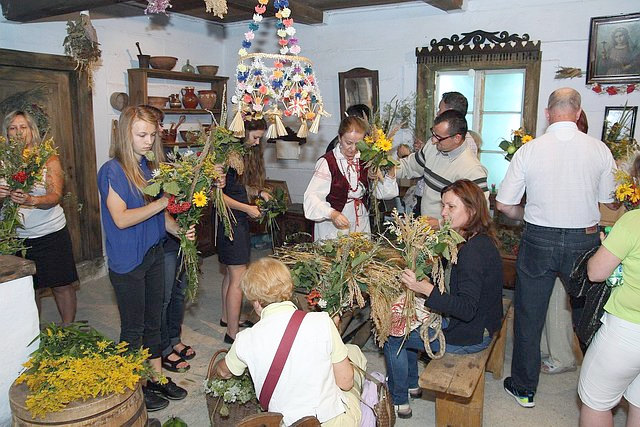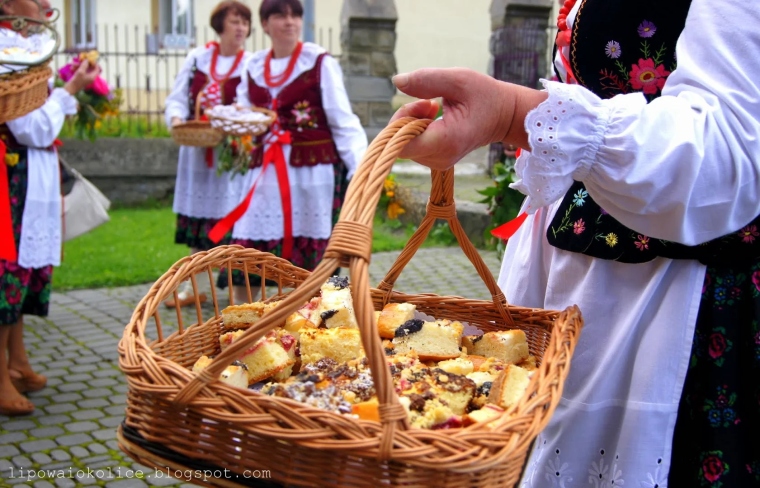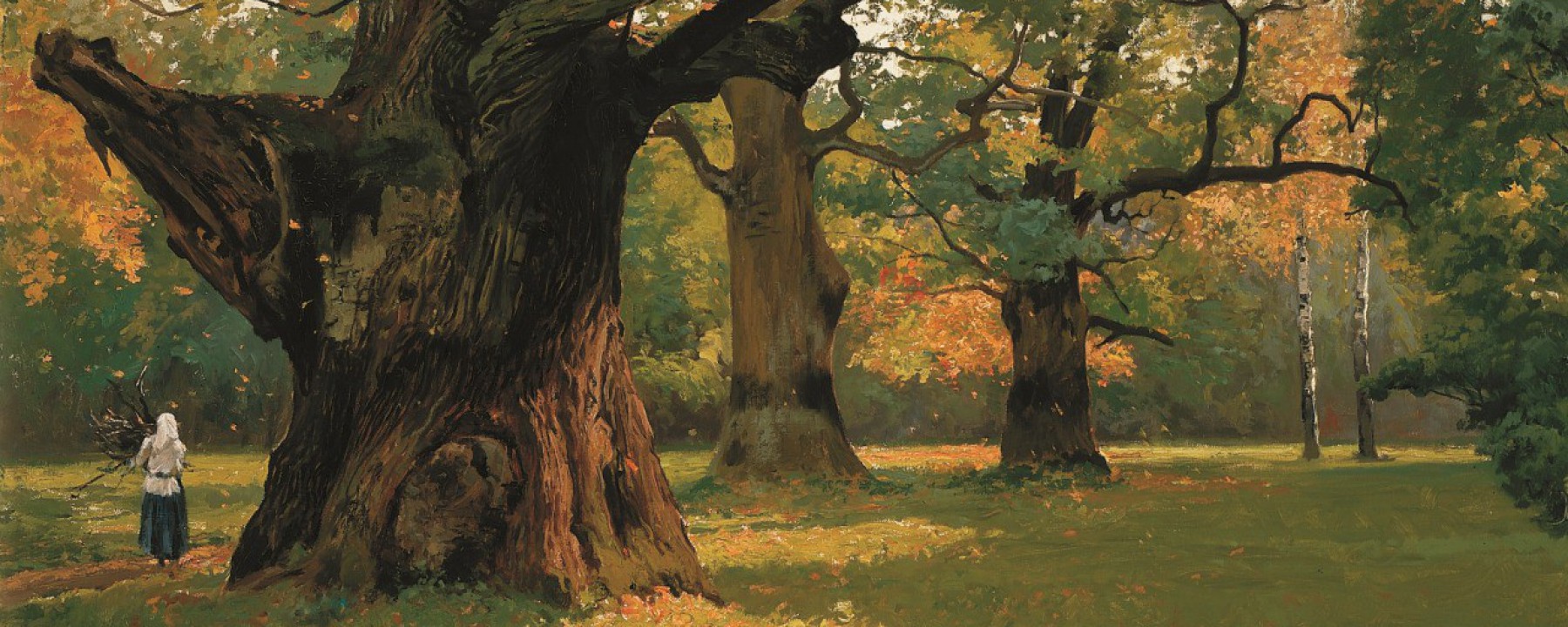
August 15th – the day of the Assumption of Mary – is commonly celebrated in Poland as a day dedicated to the Divine Mother of Herbs (Matka Boska Zielna). It’s one of the many holidays of the Christian Holy Mother which resulted in a process of syncretism with much older beliefs rooted in the old-Slavic Faith.
The name of that day and the Holy Mother’s title as the Goddess of Herbs comes entirely from the Polish folklore. It is one of old customs that never got erased but were adopted by the Polish Catholic Church and reinterpreted through the Christian doctrine (see also for example: Gromnica – Thunder Candle and the Divine Mother of the Thunder Candle / with the Wolves). The tradition of celebrating the Divine Mother of Herbs got eventually linked with the day of the Assumption of Mary. Nowadays, due to lack of a proper education about the pre-Christian beliefs in Poland, some of Polish people themselves would even argue about that day being rooted entirely in Christianity. Here in this article I will show you simply how this feast looks like, and how it is and was interpreted in the Polish countryside.

Season of harvest and the Slavic goddess Mokosz
Day of the Divine Mother of Herbs is connected very closely to the season of harvest when the vegetables and fruits rippen, and when the crops are collected from the fields. This holiday was always seen here in Poland as dedicated to the femininity and to the ‘feminine’ side of the nature – its growth and ability to ‘give birth’ to the crops. It precedes a big festival called dożynki that officially ends the harvest which is celebrated around the turn of August and September.
In the old days it was forbidden for the people to eat the fresh crops (any of the grains or vegetables collected from the fields in the summer and the tree fruits like apples or pears) before the celebrations of blessing on the day of the Divine Mother of Herbs.
August 15th used to be one of the most important days for the Polish farmers. It was ending the ritual season of harvest – a crucial season of hard work that determined how much food would a family have on their table for the whole next year – and marked the beginning of a joyful season when the results of the hard work could be finally appreciated.
In the context of that holiday the Holy Mother is seen as a patroness of the soil, of lush greenery with all the nature’s flowers and herbs, and of all kinds of the ‘gifts of the earth’ – crops, fruits, vegetables. In the Polish folklore she is reflecting the nature’s fertility. Most of these beliefs as passed down and surviving in the Polish countryside are closely connected to the remnants of the old-Slavic goddess Mokosz or Marza and the primal beliefs in Matka Ziemia (Mother Earth).




In the church: blessing of herbs and crops
The celebrations of the day of the Divine Mother of Herbs start with a church mass. People bring bouquets or wreaths (that detail varies from region to region) made of summer herbs and flowers as well as fresh crops to get them blessed in the church. In some regions the women are weaving in whole branches of fruit trees or berry shrubs, very often with the fruits still hanging from them.
According to ethnographers these blessings bear clear traces to old-Slavic offerings. There are many of such remnants in the Polish culture. A similar example where the pre-Christian food offerings survived in a process of syncretism is the well-known ‘święconka’ – food baskets brought to churches for Easter across Poland, and a related custom is observed also during the celebrations of Green Week and Corpus Christi when the spring herbs and flowers are blessed. After the day of Divine Mother of Herbs, the crops are blessed also during the celebrations of dożynki (the harvest festival mentioned above).
It’s worth mentioning here that some old sources point out that in the past the day of the Divine Mother of Herbs was also called Divine Mother of Dożynki (Matka Boska Dożynkowa, por. etnomuzeum.eu), and those two names for the ceremony of the summer blessing of the crops have most likely one common root (a pre-Christian harvest festivity). Contrary to the fixed day of Divine Mother of Herbs, dożynki is a moveable feast, organized simply when the all the crops are already collected from the fields. In some regions of Poland it’s the day of the Divine Mother of Herbs when the first dożynki feast is also organized.
Herbs and flowers play a great role in the Polish countryside and were widely used in the folk medicine and magick. There are many herbs and flowers considered ‘powerful’. Polish folklore determined very precisely how to prepare the plants for a later use – when to collect them and more importantly, when to bless them before using. The day of the Divine Mother of Herbs was crucial for that. It’s precisely the reason why the Polish women were preparing the herbs and flowers for the blessings.
Plants were often getting various traits and personalities in the Polish folklore, and many people from the countryside still believe that the plants they grow are feeling and understanding the surroundings. Many Polish grandmothers are still continuing and old custom of thanking the herbs during the process of cutting and drying. Some herbs have specific ritual names in the Polish folklore used during the preparations of the bouquets and wreaths – the women weave in for example the ‘Holy Mother’s braids’ or the ‘Holy Mother’s tears’ for the day of Divine Mother of Herbs.
At the end of the holy mass the priests were blessing also carts or tables with crops and meals which were often waiting outside the churches. After that the people were sharing small homemade traits, and then feasting in their households and visiting neighbours for the rest of that day.







In the household: A joyful feast and protective rites
Each household was preparing a small feast for the day of the Divine Mother of Herbs. People baked fresh bread and cakes, and some housewives would even stay up working in the kitchen the whole night before the holiday in order to bake enough food. Each cottage was leaving their doors open for guests who wanted to celebrate with the houseolders.
Neighbours were visiting each other and bringing small gifts – their specialities made with the use of the fresh fruits and vegetables. People were feasting until the late evening, praying and singing old songs.
In many villages sobótki (bonfires) were lit up. Young people were dancing in the fields and meadows until dawn. Old unused wreaths and bouquets were never thrown away – those from a previous year were burnt in the fire that day, and their ashes were scattered on the cropfields as a protection.
The bouquets and wreaths blessed on the day of the Divine Mother of Herbs were carefully stored, and used in folk rituals and healing practices throughout the year – they were seen as the most effective and of the clearest ‘purifying powers’.
For example, it could’ve been only the herbal bouquets blessed on that day used in the rituals of blessing the cattle in the spring. The herbs were commonly used in rituals of incensing / purifying houses throughout the year, for example before the Christmas, around the New Year’s and in the spring. Sometimes the blessed bouquets were sticked into soil of the farmfields – they were believed to ensure a good harvest in the next year and to protect the crops from pests. The blessed herbs and flowers were always decorating interiors of rural cottages – ensuring protection of the house: from lightnings, from sickness, from demons, from general evil. The herbs were usually hanging on walls close to doors or windows, decorating home altars and holy paintings, or put on the wooden construction elements like beams.
For the hardworking people from the countryside that special day was simply a sign of the harvest season coming finally to an end, and of the well-deserved time of the rest approaching. However, this day held a special meaning to the women, particularly those involved in herbalism and in healing or protective practices.



Various photos from the celebrations of the day of the Divine Mother of Herbs in Poland






Polish sources for further reading:
- Kazimiera Zawistowicz “Dzień Wniebowzięcia Matki Boskiej w wierzeniach i obrzędach”, w: “Wiedza i Życie” nr 8/9, 1933
- “Święto Matki Boskiej Zielnej” Aleksandra Pajek, opublikowane przez Muzeum Ziemi Radomskiej, 13 sierpnia 2014
- “Matki Boskiej Zielnej”, Hanna Szymanderska dla potrawyregionalne.pl, 2008
- “15 sierpnia – Matki Boskiej Zielnej” artykuł opublikowany przez Muzeum Etnograficzne w Tarnowie
- “Święte bukiety – zwyczaj święcenia roślin w bukietach w dniu Matki Boskiej Zielnej i w wiankach w oktawę Bożego Ciała” Łukasz Łuczaj, etnobotanik, artykuł na prywatnej stronie, 2008
- “Matki Boskiej Zielnej obchodzimy nie tylko w Polsce”, wywiad z dr. Janem Witoldem Suligą, antropologiem i etnologiem, dla gazetakrakowska.pl, 14 sierpnia 2011
- “Matka Boża Zielna złotych kłosów pełna — Wniebowzięcie NMP”, Julitta Tryk dla “Kuriera Wileńskiego”, 13 sierpnia 2014
- “Matka Boża Owocowa”, Julitta Tryk dla “Kuriera Wileńskiego”, 13 sierpnia 2010
- “Zioła, bukiety. Ku czci Diany i Matki Boskiej Zielnej”, Małgorzata Skowrońska dla wyborcza.pl, 11 sierpnia 2011
- “Magiczne bukiety Matki Boskiej” w: Tygodnik Opoczyński
Have a question? Want me to write more about certain details? Feel free to use the comments section below!

4 thoughts on “Day of the Divine Mother of Herbs”